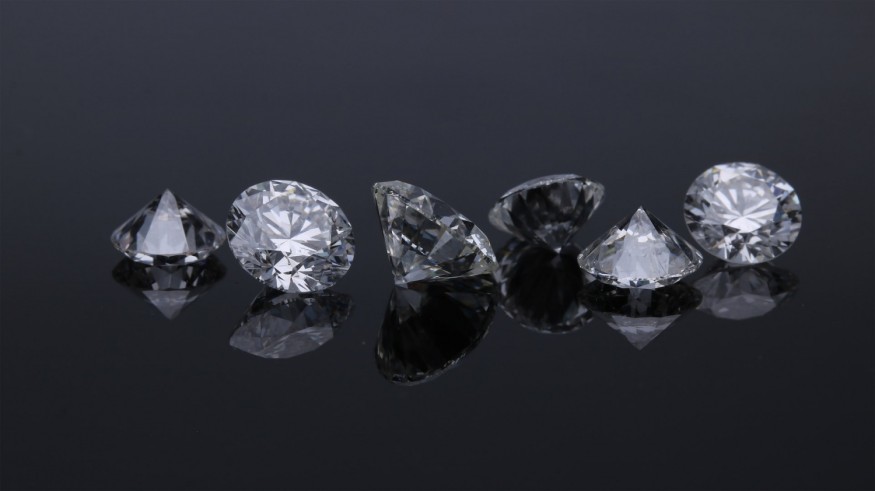
The world has been swept up in the increasing appeal of lab diamonds in recent years. The affordability and sustainability they bring to the table can be linked to their growing popularity, which makes them the ideal choice for most customers looking for quality diamonds.
Lab-grown diamonds are also gaining credibility as a natural diamond substitute. Thanks to technological advancements, they are created with similar quality and durability and evaluated by the same gemological institutes.
This article discusses the properties of lab diamonds to see how they fare before their natural counterparts.
Mineral Properties
Lab diamonds have a cubic crystal structure that resembles how mined stones are formed. This indicates that they have a symmetrical, three-dimensional structure of atoms grouped in a regular and repeating pattern.
They have the highest Mohs hardness rating of 10 and can scratch most other materials due to their high hardness and durability.
Lab-grown diamonds have a roughly 2.42 refractive index. The optical qualities of a substance can be determined in part by its refractive index-an indication of how much light is bent or refracted as it passes through a material.
Strong dispersion is a property of lab diamonds that allows them to divide white light into its many colors, producing a rainbow-like effect, hence their fire or sparkle.
With a specific gravity of roughly 3.52, they are comparable to natural diamonds. The feature of specific gravity, which measures a substance's density, is crucial for recognizing and differentiating various mineral types.
Composition
Much like natural diamonds, lab-made stones are manufactured entirely of carbon. The process is carried out in a lab using cutting-edge technology, such as chemical vapor deposition or high-pressure, high-temperature techniques.
Chemical Vapor Deposition (CVD) involves adding a diamond seed-a tiny chunk of mined or lab diamond-to a vacuum chamber along with a carbon-rich gas, such as methane. When the gas is heated to high temperatures, the carbon atoms are deposited onto the diamond seed to create a new crystal.
On the other hand, in the High-Pressure High-Temperature (HPHT) procedure, a tiny diamond seed is put into a press. The latter mimics the high pressure and high-temperature conditions usually present deep under the earth's mantle. Afterward, it is supplemented with carbon; the resultant mixture is put under intense pressure and heat to create a new diamond crystal.
The final lab diamond generated by either technique has the same chemical makeup and crystal structure as a natural diamond. However, it can be manufactured quickly and in bigger sizes and quantities than natural diamonds, which can take millions of years to produce in the earth's mantle.
Isotopic Structure
The production process and raw materials used can impact the isotopic composition of lab-grown diamonds, which can be structured differently than natural stones.
Different versions of an element called isotopes have various neutrons in their nuclei but the same number of protons. Carbon isotopes like carbon-12 and carbon-13 can be found in natural diamonds, which may alter their isotopic composition. In a diamond, the proportion of carbon-12 to carbon-13 can be utilized to establish the stone's age and place of origin.
Typically, carbon sources used in the production of lab diamonds differ isotopically. Some lab diamonds are created using carbon enriched with carbon-12, generating an isotopic composition marginally different from that of natural diamonds.
However, the isotopic compositional variations between lab-grown and natural diamonds are frequently negligible and might not be visible without specific tools and methods. In addition, lab diamonds can be made with a precise isotopic composition similar to natural diamonds.
Purity
Lab and natural diamonds may have impurities that alter their color, clarity, and overall worth. Yet, there are some distinctions between the two diamond types regarding the kind and quantity of impurities.
Nitrogen, boron, and hydrogen are just a few of the many impurities found in natural diamonds. Each can affect them to a substantial degree. For instance, boron impurities may give diamonds a blue hue, whereas nitrogen impurities may result in a yellow or brownish tint.
But, unlike mined stones created in an uncontrolled environment, lab diamonds can be produced with fewer imperfections from purer raw elements grown in cleaner environments. Hence, they can often be more likely to appear pure and colorless.
It is crucial to know that lab diamonds can sometimes be purposely infused with imperfections to produce any shade or look. Nitrogen impurities are caused to give lab diamonds a yellow or orange hue; boron impurities may have a blue hue to them.
© 2025 ScienceTimes.com All rights reserved. Do not reproduce without permission. The window to the world of Science Times.












